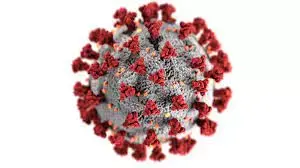Not in most jobs.
(Any/Comrade, Tankie for the unserious)
Marxist-Leninist with Meowist leanings (cat supremacy, but love all animals)
Labor organizer. USian.
Scientist, experience in vaccines/drug delivery/chemistry/analytics/biochemistry/protection of eggs dropped from tall structures
- 0 Posts
- 154 Comments

 4·3 days ago
4·3 days agoLooks like my colon if I drank all that coffee.
deleted by creator

 3·4 days ago
3·4 days agoIronic. They need to copy a portion of the manifesto just to join that instance.

 8·5 days ago
8·5 days agoA potential dockworkers strike could mean product shortages and high prices ahead of the holidaysUnited States Maritime Alliance refusal to bargain with workers in good faith could mean product shortages and high prices ahead of the holidays

 3·8 days ago
3·8 days agoMission accomplished

 3·8 days ago
3·8 days agoYes, but I am the guy named Israel that the foreign minister of Israel named Israel sends to pick up the checks made out to Israel.

 3·8 days ago
3·8 days agoConsidering over 100 aid packages have been sent that don’t meet the congressional review threshold, making them public knowledge, how could you know?
Can’t hold them accountable for war crimes if they don’t have to tell you they contributed…

 3·9 days ago
3·9 days agoI would love to see all of the representatives get up and take a break in these moments. The US is giving an empty speech about working together, show them the same level of disrespect. Really, if they are being a bad actor, what is the point of humoring them and pretending this will lead to better diplomatic relations? Send them the message that the world is tired of their shit and is done playing along.
Great point, fungus is the best among us. I never cease to be amazed by what they can accomplish!
I think for long-term solutions to the plastic problem, it would be better to use a replacement for petroleum-based plastics, such as natural polymers, than to try to make it so petroleum-based plastics were viable in the long term. There are a lot of challenges to overcome in the area of alternative plastics, but I know some people working on this problem and there seem to be promising candidates. I believe it’s only a matter of time and research before we have viable alternatives that are affordable, biodegradable on a short time-scale, and viable replacements for the petroleum-based plastics currently used.
While I think it’s a technology issue now, I also think it will largely become an issue of gaining widespread adoption across the vast diversity of industries using single-user plastics today. There’s also the problem of how degradation of such polymers will affect the environment when used on such a large scale, but I’d include this in the technology phase as something we could probably figure out, but if adoption was quick enough, we may not have this figured out yet.

 5·10 days ago
5·10 days agoGood points. Without reading deeply, my main question is how long this protection lasts? The mRNA vaccines only confer ~4 months of protection, but this seems to be an inactivated virus with full spike protein.
If this could 1) prevent infections, and 2) confer protection for up to a year, this would be a serious improvement. I know there are groups working on this in the West too, but I think they are focused on mRNA mostly and fat chance Western countries would make this widely and cheaply available to the world. It would be interesting to see a comparison in protection profiles from mRNA coding for the spike protein vs inactivated virus with spike if both end up effective when administered intranasally.

 11·10 days ago
11·10 days agoSo they’re not actually testing protection from covid really?
Not yet. Stage 1 clinical trials are not meant to assess efficacy, that’s what the next stage will cover. For more info, this page gives a good overview on clinical stages under the “Testing the Vaccines in People” heading. My familiarity is from the US, so it’s possible stages are different in China.
I’m not going through the entire study now because it’s late and I’m sick, but they would need to exclude those who were infected before the date they are deemed “fully vaccinated” as this would affect their immune response and obfuscate their results, particularly in terms of protection. They would want to see protection only after full vaccination in this study design
Main takeaways from this paper:
-
Intranasal vaccination was well-tolerated (it doesn’t suck to get, meaning it could move to the next trial stage),
-
More studies are needed to be sure, but there were indications that an Intranasal vaccine could be effective in preventing infection.
This will be a lot of simplification and glossing over details, but the main immunological difference in intramuscular (IM) vs Intranasal (IN) vaccination is the type of protections they confer…
The goal with IM is typically to help reduce the length and intensity of an infection, to induce a biological memory to help you fight off an infection, not to completely prevent it from happening. IM vaccination activated IgG, so you’ll see them look for IgG levels and T-cell responses. The type of IgG activation helps tell you what type of T helper cell profile skewing is created, and different profiles can correlate with protection for specific diseases.
Aside from not having to get a shot, IN vaccines aim to create an IgA response rather than just IgG. IgA is able to actively prevent infections from ever occurring by offering protection within your mucous membranes. This is in addition to the type of protections you get from IM administration. The drawbacks to IN vaccination are mainly that it’s harder to induce the same levels of protection as with IM. You have to deliver the vaccine to cells in the mucous membrane, which is harder, because mucous acts as a barrier to delivery of your active vaccine components and clears on the order of minutes. This means dosing is different and this plus the difference in immune cells and trafficking of active components can lead to lower immune responses.
IN administration has been used for a relatively short time (in vaccine history), but it’s shown some success (influenza and allergies in particular come to mind) and is a focus for many ongoing programs because of the potential for mucosal immunity. Creating effective mucosal immunity will not only protect the vaccinated individual, but prevent spread, which is something the IM vaccines can’t do.
-

 15·17 days ago
15·17 days agoI totally agree. This seems like an “uh, oh, we fucked up. How do we reverse this?” kind of decision after posting their polling results on Twitter.
You can always buy a rice cooker but I think it’s good to learn how to cook without specific instruments, it also cuts down clutter in the kitchen.
I take a similar approach, but wanted something better for rice, so I bought an aluminum pot with a ceramic coating on the inside as an alternative to a rice cooker. Does a great job with rice and can be used for many other things as it is a normal pot/dutch oven.

 5·18 days ago
5·18 days agoThe wonderful thing about patriarchy is that it circles back around and slaps men too.
my former manager who wanted projects estimated in minutes.
That wasn’t a manager, that was a demon.



After years of putting up with this shit, I wouldn’t be calling a complaint line, I’d be hurling things on top of the vehicles from the building, but libs call me unreasonable.
“Wow, looks like a cinder block fell off the building, guess it’s a good thing your stupid car was illegally parked so it didn’t hit any pedestrians. Thanks for protecting and serving us,
pigofficer!”